|
|
| INVITED
SPEAKERS |
FEATURED SPEAKERS
|
CHAIRS |
| Michael Batty
David Seamon
Jeremy Whitehand
Daniel Montello
| Bill Hillier
Julienne Hanson
John Peponis
Alan Penn |
Ayse Sema Kubat(Chair of SSS6)
Julienne Hanson(Workshop Chair)
Kayvan Karimi (Workshop Chair)
Alasdair Turner(Workshop Chair)
|
INVITED SPEAKERS
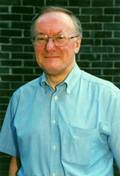
|
Michael Batty is
a Professor of Spatial Analysis and Planning at University College London.
Center for Advanced Spatial Analysis at UCL is run under his directorship.
He was previously Director of the SUNY Buffalo site of NCGIA (1990-1995)
and was Professor and Head of the Department of City and Regional Planning
in the University of Wales at Cardiff from 1979 until 1990.
Dr. Batty has Degrees from the University
of Manchester (BA) and Wales (PhD), is a Fellow of the British Academy
as well as a Fellow of the RTPI, CIT and RSA. His research is in the
development of computer based technologies, specifically graphics-based
and mathematical models for cities, and he has worked recently on applications
of fractal geometry and cellular automata to urban structure. |
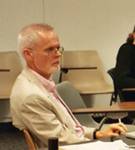
|
David Seamon is
an environment-behavior researcher and Professor of Architecture at
Kansas State University in Manhattan, Kansas. His research and writings
focus on the ways that the natural and built environments contribute
to human well-being. David Seamon received the 2006 Service Award from
the Environmental Design Research Association for his contributions
to the environmental design field and contributions to the organization.
Seamon has written many books and more than 50 articles. Since 1992,
he has served as the editor of the State University of New York Press
Series in Environmental and Architectural Phenomenology, now totaling
six volumes, and he has published the Environmental and Architectural
Phenomenology Newsletter for more than 16 years.David Seamon holds a
Ph.D. degree from Clark University, Worcester, Massachusetts, and a B.A.
from State University of New York at Albany, Albany. Key themes in which
Seamon is interested include human aspects of design; place and place-making;
the nature of environmental and architectural experience; environmental
and architectural aesthetics; artistic media as a means for understanding
environment, place, and nature; Christopher Alexander’s "pattern
language; ”Bill Hillier’s "space syntax," especially as
the approach helps to understand human co-presence, encounter, and place
regularity; the "phenomenology of nature" developed by Johann
Wolfgang von Goethe; phenomenology as a method of inquiry in the human
sciences and environment-behavior research. |
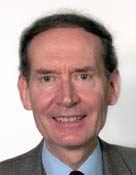
|
J. W. R. Whitehand
is an Emeritus Professor of Urban Geography, and Head of the UMRG at
the University of Birmingham. Whitehand graduated and later took his
PhD and DSc at the University
of Reading. After appointments
in the Universities of Newcastle
upon Tyne and Glasgow,
he moved to the University
of Birmingham in 1971.
He founded the Urban Morphology Research Group in 1974. He was a member
of the Council of the Institute of British Geographers, Honorary Editor
of the Institute of British Geographers quarterly journal Area,
Chairman of the Institute of British Geographers Urban Geography Study
Group, Secretary of the Editorial Board of the Institute of British
Geographers Special Publications, a member of the Editorial Advisory
Committee (later the Publications Committee) of the Royal Geographical
Society, and a member of the Council of the Royal Geographical Society.
He is a member of the Council of the International Seminar on Urban Form and Editor of the international journal
Urban Morphology. He has authored some 200 papers, most of them
in academic journals. These have dealt with such topics as the diffusion
of innovations, cycles in house building, the redevelopment of city
centres and, especially, the physical form of cities. His research in
urban morphology may be summarized under three headings: first, the study
of urban morphogenetics; secondly, the integration of morphogenetic
and land-economic conceptions of cities; and thirdly, the uncovering
of the agents responsible for urban landscape development. Each of these
topics has been the subject of a Special Publication of the Institute
of British Geographers for which he has been responsible.
|
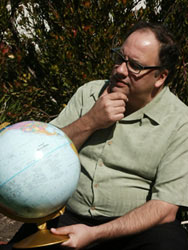
|
Daniel R. Montello
is a Professor in the Department of Geography and Affiliated Professor in the
Department of Psychology at the University of California, Santa Barbara. He is a
member of the Association of American Geographers, the Psychonomic Society, and
Sigma Xi Scientific Honor Society. Dan has PhD and MA degrees from Arizona State
University in Psychology (environmental psychology area) and a BA from the Johns
Hopkins University in Psychology. He was a Postdoctoral Fellow at the Institute of
Child Development at the University of Minnesota. His research interests include spatial,
environmental, and geographic perception, cognition, affect, and behavior; cognitive issues
in cartography and GIS; spatial aspects of social behavior; and environmental
psychology and behavioral geography.
|
FEATURED SPEAKERS
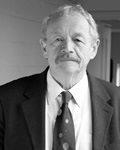
|
Bill Hillier is
Professor of Architectural and Urban Morphology in the University of
London and Chairman of the Bartlett School of Graduate Studies and Director
of the Space Syntax Laboratory in University College London. He holds
a DSc (higher doctorate) in the University of London.
He specializes in the
study of human and social space in buildings and urban environments
of all kinds. As the original pioneer of the methods for the analysis
of spatial patterns known as ‘space syntax’, he is the author of
The Social Logic of Space (1984, 1990) which presents a general theory
of how people relate to space in built environments, ‘Space is the
Machine’ (1996), which reports a substantial body of research built
on that theory, and a large number of articles concerned with different
aspects of space and how it works. He has also written extensively on
other aspects of the theory of architecture. Past research has included
work on the spatial structure of cities and urban areas, on problem
housing estates, including spatial factors in crime, the design of offices
and research laboratories and the relation between domestic space organization
and culture. The space syntax techniques for spatial analysis and design
are now being used by leading designers in major urban and architectural
projects in many parts of the world.
|
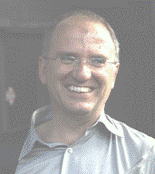
|
John Peponis is
a Professor of Architecture at the College of Architecture, Georgia
Institute of Technology. He holds a PhD, MSc, B.Sc, all from the Bartlett
School of Architecture and Planning, University College London. He is
a registered Architect in Greece. He has taught at the School of Architecture,
National Technical University of Athens and nd Bartlett School of Architecture
and Planning, University College London.
Prof. Peponis studies the principles
and constraints that govern the generation of built form and its social,
cultural and cognitive functions. His publications and courses address
the description and measurement of spatial properties that determine
the experience and social functions of architecture; the formal structure
of design languages and design formulation, the strategic design choices
that define the social, organizational and cultural function of complex
buildings, the spatial structure of urban areas as it affects the morphologies
of movement, co-awareness, and urban life. John Peponis was a member
of the team that pioneered the development of “space syntax” under
the direction of Bill Hillier through the 1980s.
|
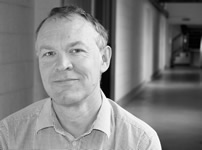
|
Alan Penn is an
architect and a researcher at the Bartlett, UCL. He has been directly
involved in the development of space syntax techniques and their application
in a wide range of research and live-project domains. In particular
he has specialized in the application of these techniques to the design
of large and complex buildings and work environments such as offices,
science laboratories and hospitals. At the urban scale he has worked
on the use of space syntax for analysis of vehicular flows, as well
as for the predictive modeling of urban air pollution distributions.
He has made a significant contribution to the development of new analytic
techniques and software for space syntax analysis, and has recently
managed projects which have developed software to tackle the representation
and analysis of three dimensional spatial systems. He is currently the
Director of the Virtual Reality Centre for the Built Environment, a
UK Government and industry funded research centre at UCL, in collaboration
with Imperial College London, which is developing the use of virtual
reality techniques for application to the design, construction and management
of the built environment.
Alan Penn holds an MSc in Advance Architectural
Studies (1983-Distinction), and Diploma in Architecture (1980), and
BSc in Architecture all from University College London.
|
SYMPOSIUM CHAIR
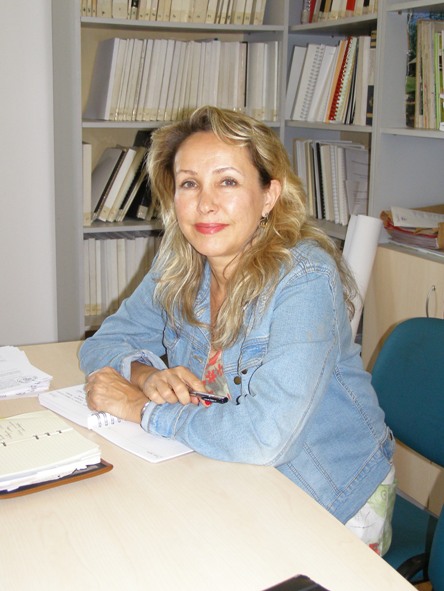
|
Professor
Ayse Sema Kubat is a Professor at the Department of City and Regional
Planning of Istanbul Technical University (ITU). She was a founding
professor for the Department of Landscape Architecture at ITU. She has
lectured at University College London, Tokyo University, and Georgia
Technical University. She recently organized International Workshop
in Sustainable Urban Regeneration at ITU in collaboration with Tokyo University.
She has been serving on the International Steering and Refereeing Committees
for Space Syntax Symposiums and she is the Chair of the 6th International
Space Syntax Symposium to be held in Istanbul.
Dr. Kubat has degrees of B.Arch and M. Arch from ITU, and a PhD with
a concentration of Urban Analysis also from ITU. Her research is in
the area of Urban morphology, urban design & planning, urban renewal
and conservation, urban history, landscape design & planning and
since 1990 she has been interested in space syntax methodology and applied
this method to a number of funded research about the city of Istanbul. |
WORKSHOP CHAIRS
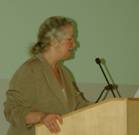
|
Professor
Jullienne Hanson is an architect-academic who has lectured and carried
out research at the Bartlett UCL since 1976. She holds a Ph.D. in Architecture
from University College London (1989). She is the co-originator with
Professor Bill Hillier of the 'space syntax' computer-based representations,
analytic techniques and research methodologies that have become the
basis for configurational analysis of building layouts and urban places.
Professor Hanson was the Managing Chair
of the Built Environment Expert Advisory Group for Age Concern England's
Millennium Debate of the Age, 1996-2000 and the Principal Investigator
on an EPSRC EQUAL Project to profile the UK’s housing stock with the
needs of older people in mind. She is a Co-Investigator on VivaCity2020
an ambitious, 5-year EPSRC Sustainable Urban Environments consortium.
She is also a co-investigator on a series of EPSRC Platform grants associated
with the ‘space syntax’ research programme. Prof Hanson is a member
of the Housing Corporation’s Older People’s Advisory Group, and
a member of the Silver Cities Forum. |
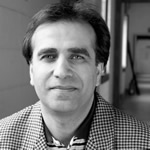
|
Dr. Kayvan Karimi
is an architect and urban designer with more than fourteen years of
experience in architecture and urban design. He earned his PhD on architectural
and urban morphology (1993-98) from UCL. During his doctoral studies
he joined Space Syntax, where he is now a director. He has continued
his research and lecturing activities in parallel to his main role in leading
consultancy projects. Kayvan's project experience includes a wide range
of architectural and urban projects in the UK and abroad, including strategic
design, master planning, regeneration and conservation projects.
(http://www.spacesyntax.com/tool-links/people/staff-portraits/dr-kayvan-karimi.aspx) |

|
Alasdair Turner
is a lecturer in Architectural Computing at the Bartlett School of Graduate Studies and the course director of the MSc Virtual
Environments. He researches models of people movement and social interaction,
spatial analysis, generative design, and neural network models of human
behaviour. His work on spatial analysis has included the introduction
of visibility
graph analysis (with
Alan Penn, David O'Sullivan
and Maria Doxa) and an algorithm to generate axial maps automatically
(with Alan Penn and Bill Hillier). Alasdair is author of UCL’s Depthmap
spatial analysis and pedestrian modeling software. The software incorporates
Visibility Graph Analysis, axial line analysis and EVAS
agents in one package. |
|

|

